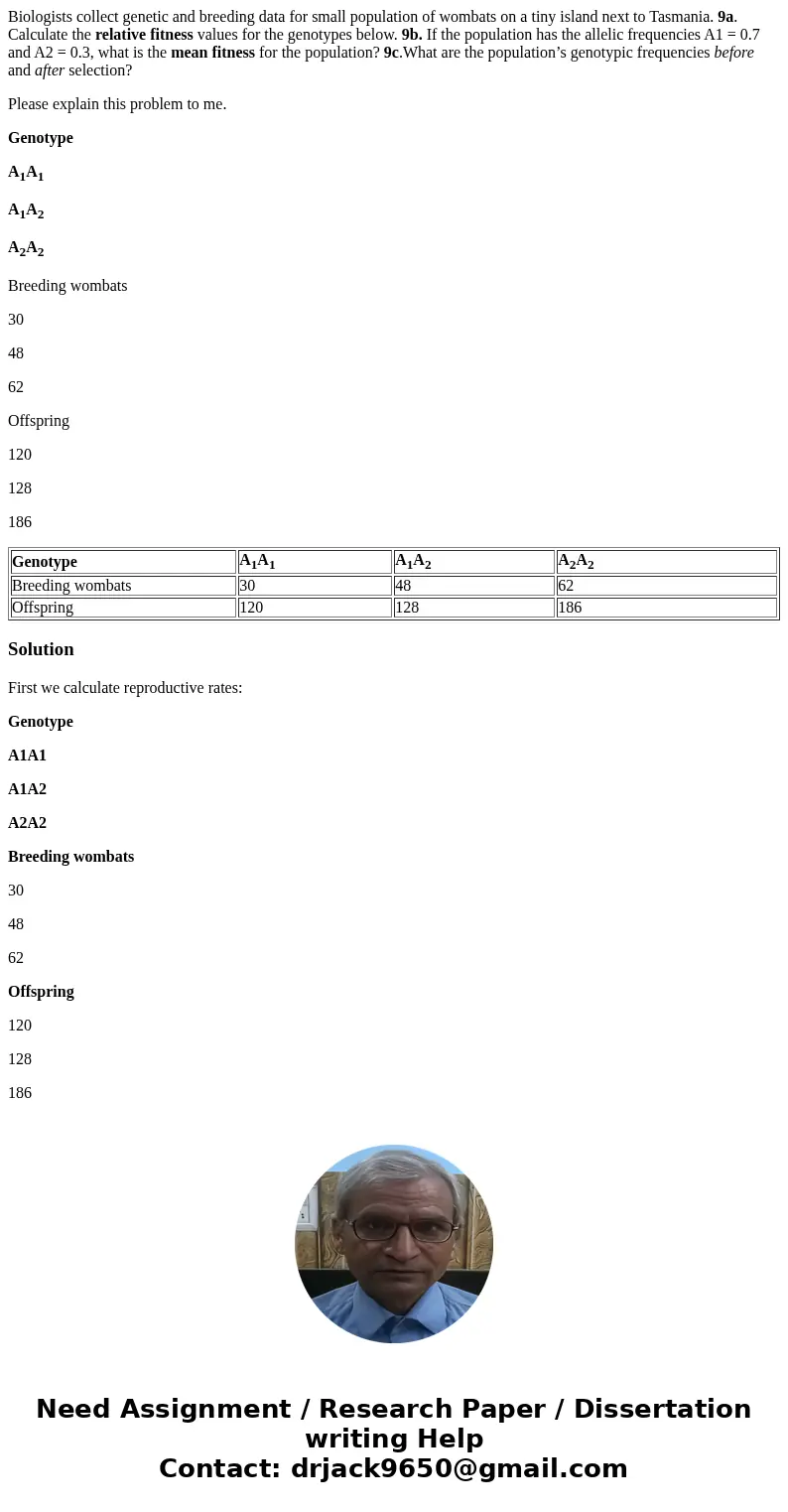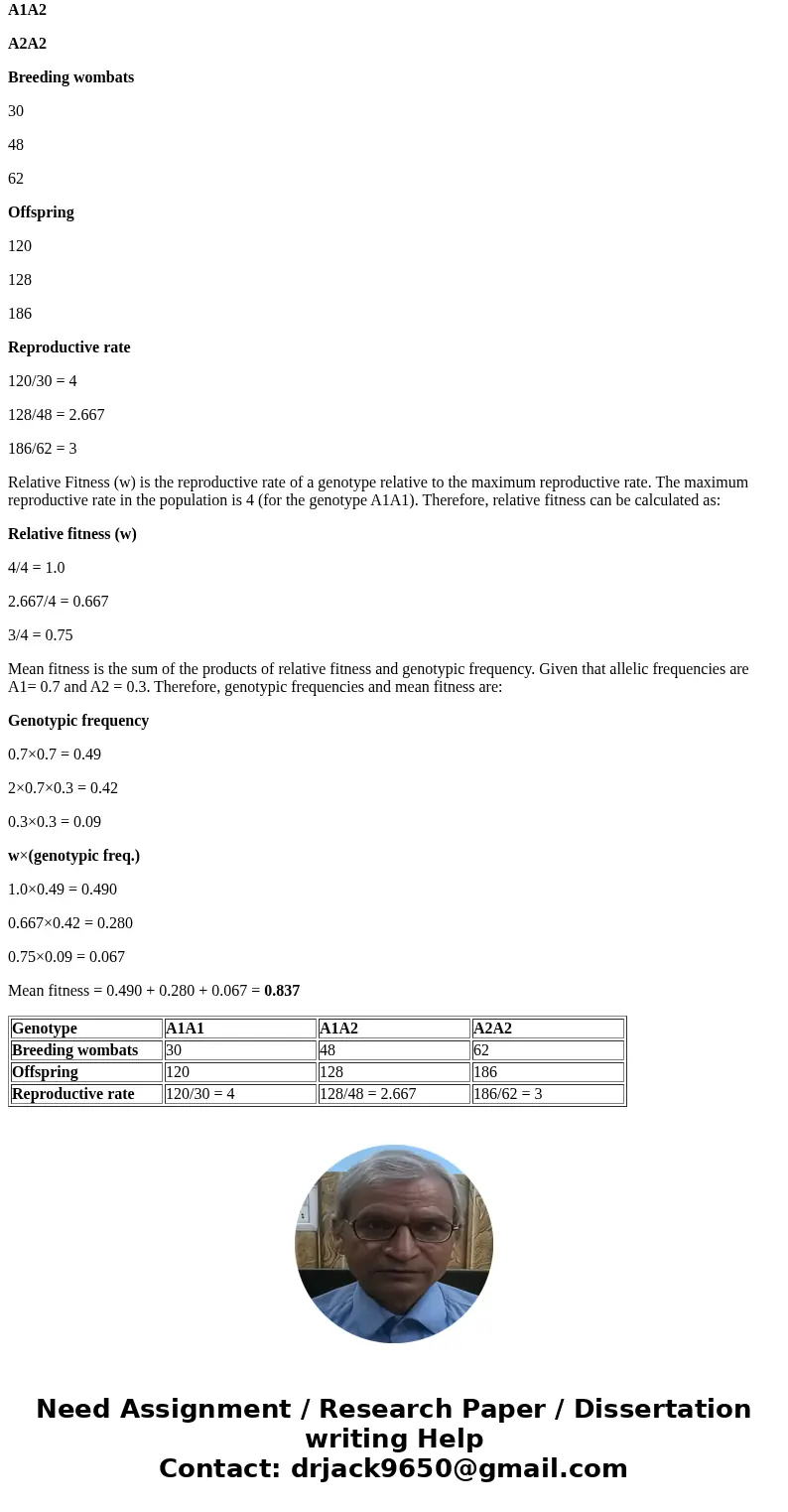Biologists collect genetic and breeding data for small popul
Biologists collect genetic and breeding data for small population of wombats on a tiny island next to Tasmania. 9a. Calculate the relative fitness values for the genotypes below. 9b. If the population has the allelic frequencies A1 = 0.7 and A2 = 0.3, what is the mean fitness for the population? 9c.What are the population’s genotypic frequencies before and after selection?
Please explain this problem to me.
Genotype
A1A1
A1A2
A2A2
Breeding wombats
30
48
62
Offspring
120
128
186
| Genotype | A1A1 | A1A2 | A2A2 |
| Breeding wombats | 30 | 48 | 62 |
| Offspring | 120 | 128 | 186 |
Solution
First we calculate reproductive rates:
Genotype
A1A1
A1A2
A2A2
Breeding wombats
30
48
62
Offspring
120
128
186
Reproductive rate
120/30 = 4
128/48 = 2.667
186/62 = 3
Relative Fitness (w) is the reproductive rate of a genotype relative to the maximum reproductive rate. The maximum reproductive rate in the population is 4 (for the genotype A1A1). Therefore, relative fitness can be calculated as:
Relative fitness (w)
4/4 = 1.0
2.667/4 = 0.667
3/4 = 0.75
Mean fitness is the sum of the products of relative fitness and genotypic frequency. Given that allelic frequencies are A1= 0.7 and A2 = 0.3. Therefore, genotypic frequencies and mean fitness are:
Genotypic frequency
0.7×0.7 = 0.49
2×0.7×0.3 = 0.42
0.3×0.3 = 0.09
w×(genotypic freq.)
1.0×0.49 = 0.490
0.667×0.42 = 0.280
0.75×0.09 = 0.067
Mean fitness = 0.490 + 0.280 + 0.067 = 0.837
| Genotype | A1A1 | A1A2 | A2A2 |
| Breeding wombats | 30 | 48 | 62 |
| Offspring | 120 | 128 | 186 |
| Reproductive rate | 120/30 = 4 | 128/48 = 2.667 | 186/62 = 3 |


 Homework Sourse
Homework Sourse